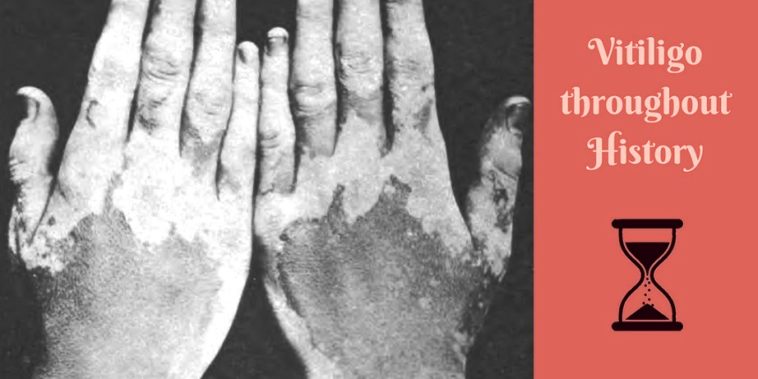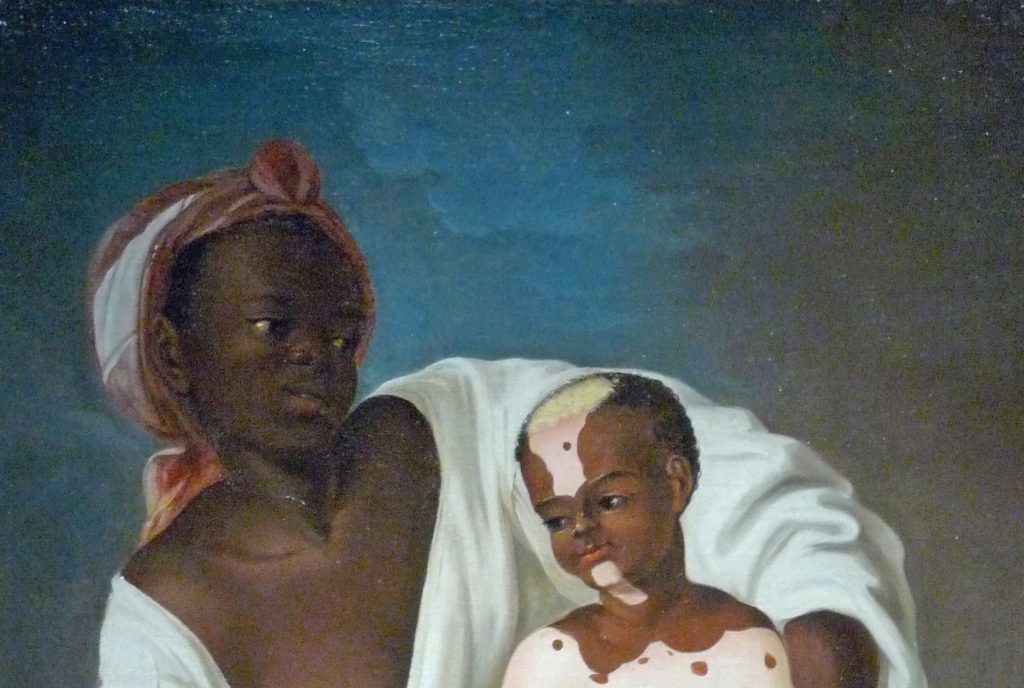Vitiligo was observed very early in written history with its first description dating back more than 3500 years. However, throughout the centuries, the chronic skin disorder continued to provoke discrimination and segregation in certain cultures, where affected individuals were unable to find jobs or get married.
Vitiligo was not very commonly discussed until the 1990′s when it sprung into the spotlight with celebrities like Michael Jackson getting affected by it. In this blog, we have tried to document mentions of vitligo throughout history, up until the end of the 20th century. Let’s understand what it meant in different cultures:
Egypt
Descriptions of a skin disorder believed to be vitiligo date back to a passage in the medical text Ebers Papyrus in ancient Egypt (1500 BCE). The Papyrus describes two forms of pigmentary loss. One is interpreted as leprosy as “thou shalt not do anything to it.” The other seems to characterize only a lack of pigmentation and is believed to be vitiligo.
India
Mentions of whitening of the skin are also present in sacred Indian texts such as Atharva Veda (1400 BC). Around 600-500 BCE, the Ashtanga Hridaya (one of the first textbooks of Ayurvedic medicine) explained prognostic factors of depigmentation.
In 200 BC, the Manu Smriti described “Sweta Kushtha” meaning “white disease” skin lesions that probably also indicated vitiligo. Subsequently, “Shweta Kustha” was referred to as vitiligo in the Charaka Samhita (100 CE) – another Sanskrit text on Ayurveda.
Japan
An accurate description of vitiligo also exists in a collection of Japanese Shinto prayers, Amarakosa, dating from 1200 BC. The prayers report on “shira bitu” meaning “white man”.
Greece
Much emphasis on “white spots” can be found in the Greek literature as well. Herodotus (484-425 BC), a Greek historian wrote that foreigners, who had such lesions, must have “sinned against the sun” and had to leave the country immediately.
Rome
The word vitiligo has been derived from the Latin word “vitelius” which means the white flesh of calves. The term was first used by the Roman physician, Aulus Cornelius Celsus, in his classic medical text De Medicina (the 2nd century CE).
Arabia
In ancient Arabic books, “white skin” was expressed as “baras” and similar terms like “bahak” or “bohak”. However, in the Quran, the word “alabras” has been associated with vitiligo.
Korea
Not all cultures appeared to have discriminated against the depigmentation. Socially, the Koreans were tolerant of depigmentation cosmetically. A medical textbook named the Doney Bogam, written during the 17th century Yi dynasty in Korea, describes vitiligo as a Hyperpigmentary disorder. In fact, a portrait of Chang Myeong Song (a high-ranking government official in Yi dynasty) shows vitiliginous skin.
The United States
During the 18th and 19th centuries in the USA, the rise of vitiligo cases began to attract interest from the public and the medical community. The most recognized and influential case of vitiligo from this period was that of Henry Moss.
A man of African descent, Moss began experiencing depigmentation of his skin at the age of 38. What began with his hands eventually extended to his arms, legs, and face. He quickly became a popular attraction in the summer of 1796 when he exhibited his body for a fee in taverns in the Philadelphia area. Charles Caldwell, a noted physician, wrote that Henry‘s name was as famous as John Adams, Thomas Jefferson, or Madison at that time.
The most talked about the case of Henry Moss was forgotten up until Michael Jackson spoke about living with vitiligo in an interview. Contrary to popular belief, the king of pop did not bleach himself white. In reality, his fading skin color was the result of vitiligo. As confirmed by, Dr. Arnold Klein, the pop sensation’s dermatologist, Jackson began battling the chronic skin disorder in 1982. By the early 1990s, the patches were just too much to hide with makeup. When the controversy over his skin color hit its zenith, he sat down for a live interview with Oprah Winfrey in 1993. After Michael’s death, his autopsy report confirmed that he had vitiligo along with Lupus, which made him lose pigmentation sooner than others.
Vitiligo Research – A timeline
-
- In the scriptures of the early European medical schools (up to the 15th century), patchy skin lesions were believed to be of leprous nature.
-
- In 1665, Marcello Malpighi proposed the granules of stratum mucosum mainly determined that skin color in vitiligo fighter.
-
- In 1879, Moritz Kaposi became one of the first to observe lack of pigment granules in vitiligo cases.
- Both Isidor Neumann in Vienna (1880) and Louis Brocq (1892) in Paris observed that episodes of emotional stress can lead to flare-ups of vitiligo. They documented that none of the treatments available then made any positive impact on the skin disorder.
-
- Phototherapy became common in the western world with the development of Psoralen Plus Ultraviolet A (PUVA) and later ultraviolet B phototherapy in the latter half of the 20th century.
How was vitiligo treated (medically and socially)?
Despite the ancient recognition, confusion with disorders such as leprosy led to the stigmatization of vitiligo fighters. The Bible (in the Old Testament) refers to “white spots” using the Hebrew word “Zara’at”. In addition to this, the Hebrew word “Tzaraath” from the Old Testament book of Leviticus (1280 or 1312 BCE) described a group of skin diseases associated with white spots.
The controversy about the different interpretations of these words made Ptolemy II demand the translation of the Bible into Greek in 250 BCE. These terms, which did not necessarily indicate vitiligo, were interpreted as the sign of sin – a punishment sent by God. Such translation to Greek led to continued confusion of those with vitiligo with leprosy and spiritual uncleanliness.
However, in many cultures, vitiligo fighters were not outcast but treated. As per many historical accounts, the ancients practiced phototherapy for vitiligo. Both ancient Indian and Egyptian writings depict psoralen-containing plants (such as Ammi majus and Psoralea corylifolia) being applied to pale macules and then exposed to sunlight.


